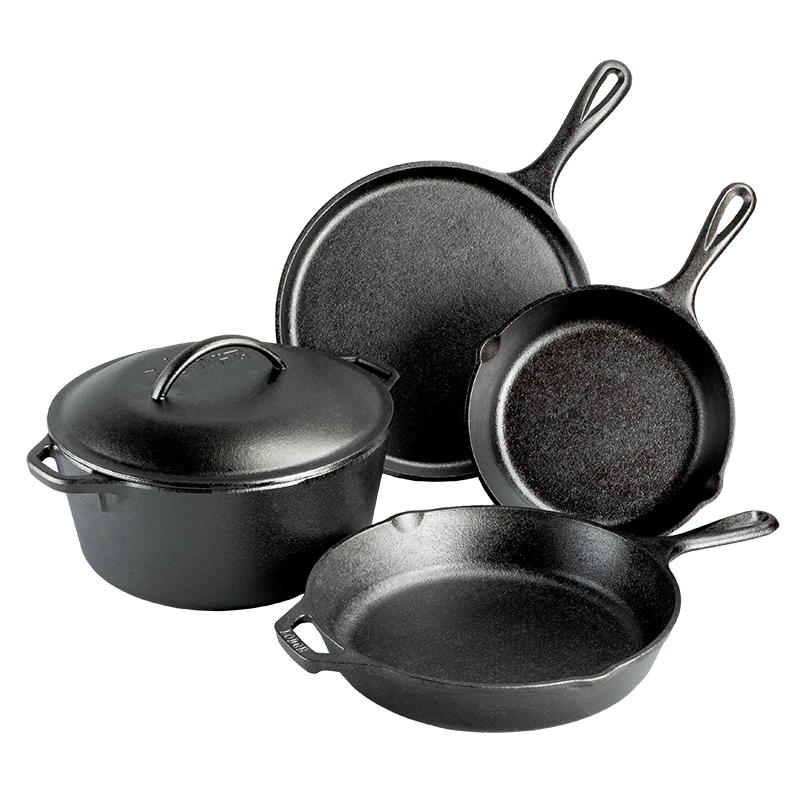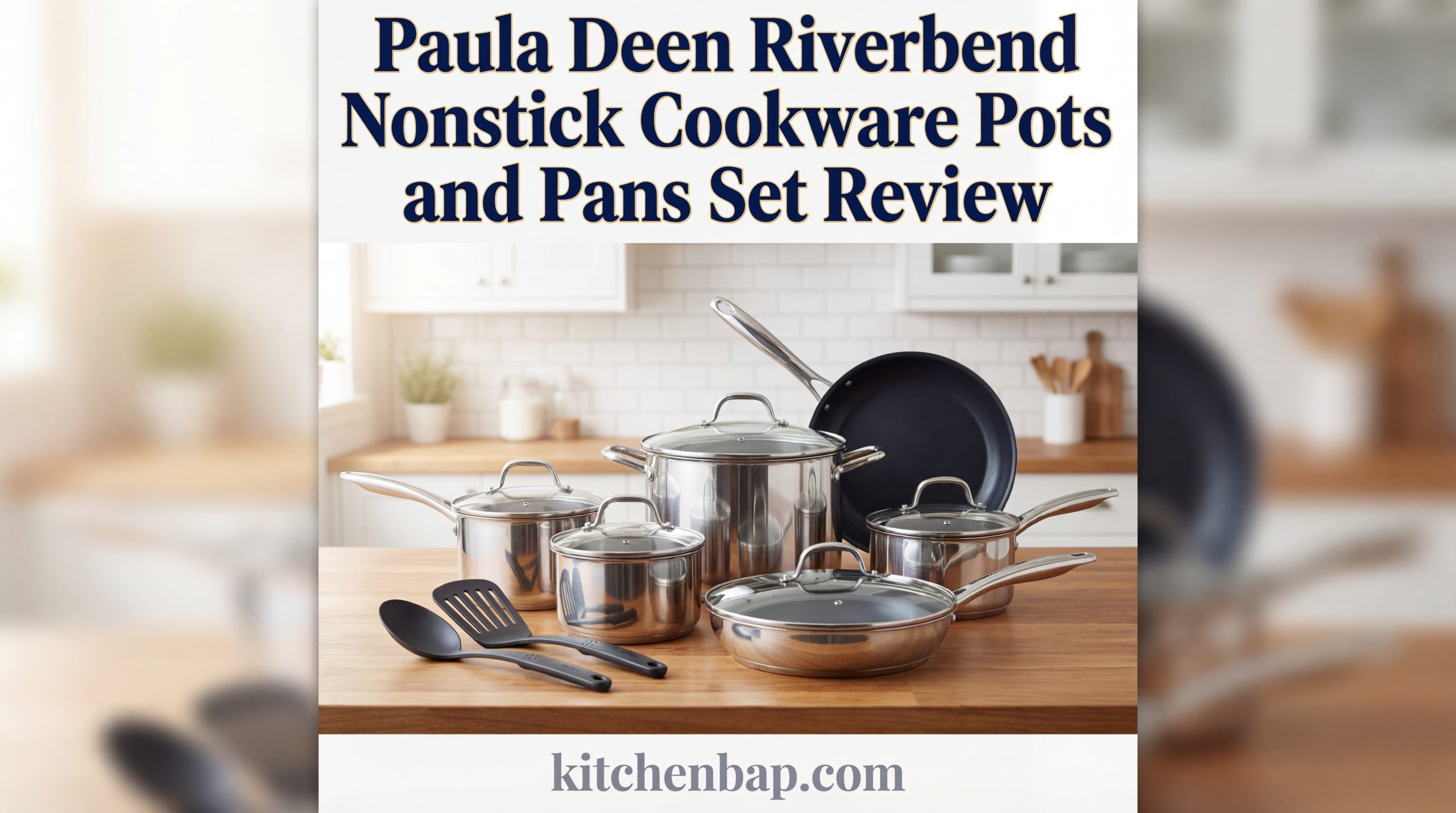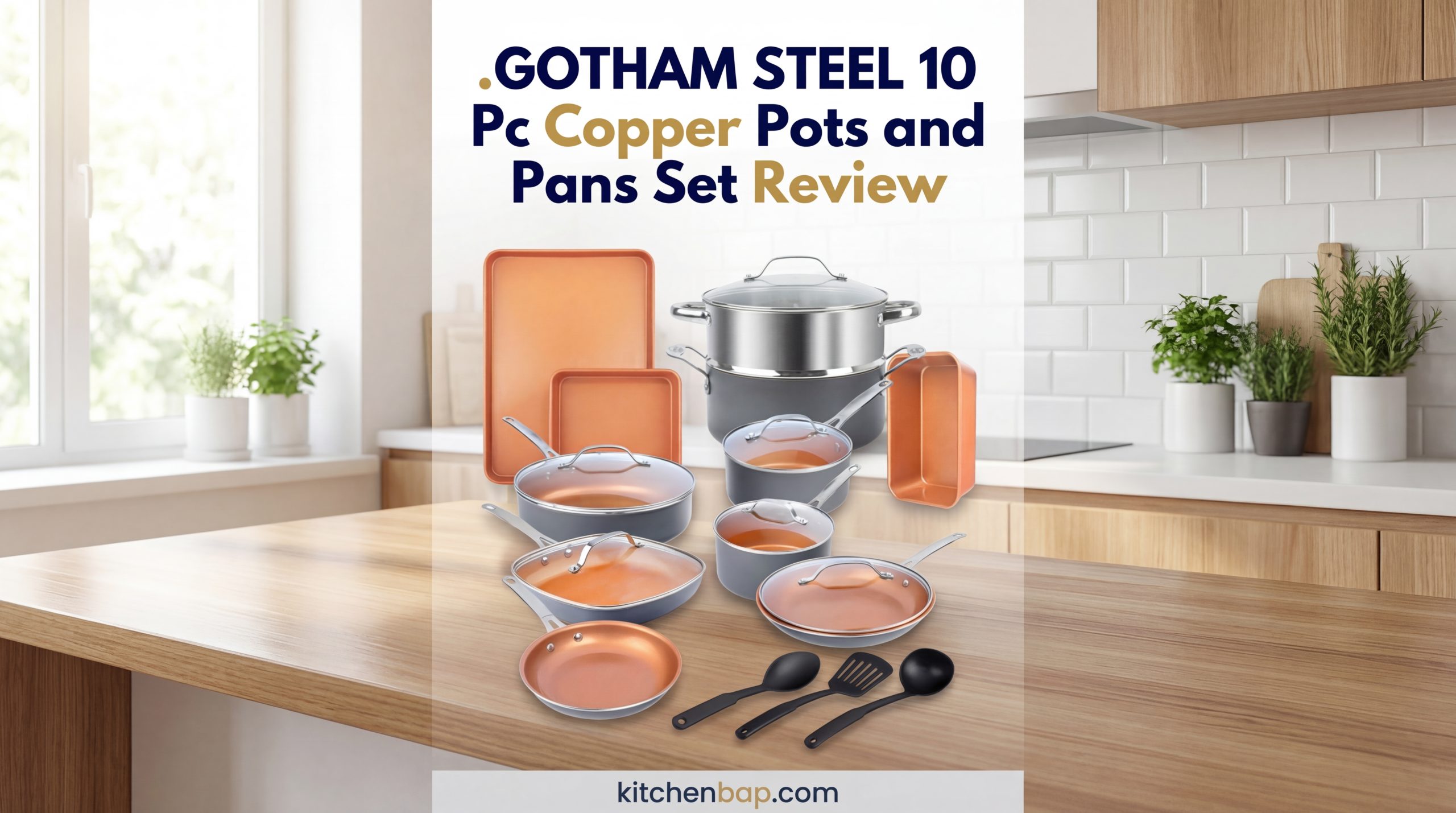Cast iron cookware is known for its excellent heat retention and durability. It’s ideal for a variety of cooking methods, from frying to baking.
Cast iron cookware has stood the test of time, cherished by chefs and home cooks alike. Renowned for its superior heat distribution, it allows for even cooking and browning. This type of cookware is incredibly versatile, capable of transitioning from stovetop to oven with ease.
Cast iron skillets, Dutch ovens, and griddles are popular choices, each offering unique benefits. With proper care, cast iron can last for generations, becoming more non-stick over time. Many appreciate its ability to add a hint of iron to food, promoting health benefits. Choosing cast iron means investing in quality that enhances your culinary experience.
The Timeless Appeal Of Cast Iron Cookware
Cast iron cookware has a rich history. It offers durability and versatility. Many chefs and home cooks cherish it. Its timeless appeal is hard to ignore.
From Ancient Cookfires To Modern Kitchens
Cast iron cookware dates back thousands of years. Ancient civilizations used it for cooking. Here are some highlights of its journey:
- Ancient China: Cast iron pots appeared around 500 BC.
- Europe: In the 17th century, cast iron skillets gained popularity.
- America: Early settlers relied on cast iron for everyday meals.
Today, cast iron is found in modern kitchens. Chefs appreciate its heat retention. Home cooks love its ability to last a lifetime.
Why Cast Iron Stands Out In The Culinary World
Cast iron cookware offers unique benefits. Here’s why it stands out:
| Feature | Benefit |
|---|---|
| Heat Retention | Even cooking and browning of food. |
| Durability | Can last for generations with proper care. |
| Versatility | Suitable for stovetop, oven, and even campfire cooking. |
| Natural Non-Stick | Improves with use and seasoning. |
| Affordable | A one-time investment for quality cookware. |
Cooking with cast iron enhances flavor. It adds depth to your dishes. No other cookware can match its charm.

Credit: www.lecreuset.com
Essential Qualities Of Cast Iron
Cast iron cookware is known for its many advantages. Its unique properties make it a favorite among cooks. Here are some essential qualities that make cast iron special.
Heat Retention And Distribution
Cast iron is famous for its heat retention. Once heated, it stays hot for a long time. This helps in cooking food evenly.
Heat distribution is another crucial factor. Cast iron spreads heat uniformly. This prevents hot spots that can burn food. Here’s a quick comparison:
| Cookware Type | Heat Retention | Heat Distribution |
|---|---|---|
| Cast Iron | Excellent | Uniform |
| Stainless Steel | Good | Variable |
| Non-stick | Moderate | Variable |
Versatility Across Cooking Methods
Cast iron cookware is highly versatile. It can be used on the stove, in the oven, or over an open flame.
Here are some popular cooking methods:
- Searing meats on the stovetop
- Baking cornbread in the oven
- Simmering soups and stews
- Grilling vegetables outdoors
Each method benefits from the heat qualities of cast iron. This makes it a must-have in any kitchen.
Seasoning: The Key To Cast Iron’s Longevity
Seasoning cast iron cookware is essential for its durability. Proper seasoning creates a non-stick surface. It protects your cookware from rust and damage. Regular maintenance ensures your cast iron lasts a lifetime. Let’s explore the science behind seasoning.
The Science Behind Seasoning
Seasoning involves applying oil to the cookware and heating it. This process creates a natural, protective layer. The oil undergoes a chemical reaction called polymerization. This forms a hard, non-stick coating. The right oil makes a big difference. Popular choices include:
- Flaxseed oil
- Canola oil
- Vegetable oil
- Grapeseed oil
Each oil has unique properties, but all work well. Proper seasoning improves cooking performance. It enhances the flavor of your dishes.
Step-by-step Guide To Seasoning Your Cookware
Follow these simple steps to season your cast iron cookware:
- Clean the pan with hot, soapy water.
- Dry it completely with a towel.
- Apply a thin layer of oil all over.
- Place the pan upside down in the oven.
- Bake at 450°F (232°C) for one hour.
- Let it cool before removing.
Repeat this process for better results. Seasoning protects your cookware from food sticking. It also helps develop a rich, natural flavor in your meals.
| Oil Type | Smoke Point (°F) | Benefits |
|---|---|---|
| Flaxseed Oil | 225 | Creates a hard coating |
| Canola Oil | 400 | Affordable and effective |
| Vegetable Oil | 400 | Common household option |
| Grapeseed Oil | 420 | Neutral flavor |
Keep your cast iron cookware seasoned for optimal performance. This simple practice extends its life and enhances your cooking experience.
Maintenance Musts For Cast Iron
Maintaining cast iron cookware is essential for longevity. Proper care keeps your pans in top shape. Here are key maintenance tips to follow.
Cleaning Dos And Don’ts
Cleaning cast iron requires special attention. Follow these dos and don’ts:
| Dos | Don’ts |
|---|---|
| Use hot water and a stiff brush. | Avoid soap and harsh detergents. |
| Dry immediately after washing. | Do not soak in water. |
| Apply a thin layer of oil after cleaning. | Never store without oil. |
Remember these points to keep your cast iron in great condition. Regular cleaning helps maintain its non-stick surface.
Storing Your Cast Iron To Prevent Rust
Proper storage is crucial for preventing rust. Follow these tips:
- Keep it dry: Always ensure your cookware is dry.
- Use a paper towel: Place a paper towel inside to absorb moisture.
- Avoid stacking: If stacking, use cloth between pieces.
- Store in a cool, dry place: Keep it away from humidity.
These steps help protect your cast iron. Proper storage maintains its quality for years to come.
Restoring And Reviving Old Cast Iron
Old cast iron cookware can be a treasure. With proper care, it can serve for generations. Restoring it brings back its beauty and functionality. This process is rewarding and fun. Let’s explore how to save your vintage pieces.
Identifying When A Piece Can Be Saved
Not all old cast iron is beyond help. Here are signs that your piece can be restored:
- Rust: Surface rust can often be removed.
- Flaking: Minor flaking can be fixed.
- Stains: Discoloration doesn’t mean it’s ruined.
- Cracks: Deep cracks may signal trouble.
Inspect your cookware carefully. If the damage seems minor, it can likely be saved. Always consider your skills and comfort level with restoration.
The Restoration Process
Restoring cast iron involves several steps. Follow this simple guide:
- Clean: Use steel wool and soap to scrub away rust.
- Rinse: Wash thoroughly with water.
- Dry: Use a towel or heat to dry completely.
- Season: Apply a thin layer of vegetable oil.
- Heat: Bake it upside down in an oven at 350°F for an hour.
Repeat the seasoning process for best results. With care, your cast iron will shine again.
| Step | Action |
|---|---|
| 1 | Scrub with steel wool |
| 2 | Rinse and dry |
| 3 | Apply vegetable oil |
| 4 | Bake for an hour |
Enjoy cooking with your restored cast iron. Each piece has a story to tell. Treat it well, and it will last a lifetime.
:max_bytes(150000):strip_icc()/__opt__aboutcom__coeus__resources__content_migration__serious_eats__seriouseats.com__images__2014__11__20141106-cast-iron-myth-1-8ff1d69b5ead4305adf927d7bb705246.jpg)
Credit: www.seriouseats.com
Common Myths About Cast Iron Debunked
Many people have misconceptions about cast iron cookware. These myths can prevent you from enjoying its full benefits. Let’s clear up some of the most common myths about cast iron.
Can You Really Ruin Cast Iron?
Many believe that cast iron is very fragile. This is not true. Here are some facts:
- Cast iron is durable and can last generations.
- It’s hard to ruin cast iron with regular use.
- Seasoning helps protect it from rust.
Some common mistakes can damage your cookware:
- Using soap on seasoned cast iron.
- Storing food in it for long periods.
- Heating it too quickly.
Even if you make mistakes, it can often be restored. Just re-season it, and you’re good to go!
The Truth About Cooking Acidic Foods
A common myth is that cooking acidic foods ruins cast iron. This is partly true but needs context.
| Food Type | Effect on Cast Iron |
|---|---|
| Tomato sauce | Can affect seasoning if cooked too long |
| Wine | Usually safe in short cooking times |
| Citrus | May strip some seasoning |
Here are some tips for cooking acidic foods:
- Limit cooking time to avoid damaging the seasoning.
- Re-season the pan after cooking acidic foods.
- Use a well-seasoned pan for better results.
Enjoy your cast iron cookware with confidence. Debunking these myths helps you use it effectively!
Innovations In Cast Iron Cookware
Cast iron cookware has evolved significantly over the years. Modern innovations make these durable pieces even more user-friendly. Today’s cast iron combines tradition with technology. New features enhance cooking and maintenance.
Enamel Coatings And Other Modern Improvements
Enamel coatings are a game changer for cast iron cookware. They offer several benefits:
- Easy cleaning: No more seasoning required.
- Variety of colors: Choose a style that suits your kitchen.
- Non-reactive surface: Cook acidic foods without worry.
Many brands now offer cast iron with enamel finishes. This makes them more versatile. The coatings also prevent rust and enhance durability.
Future Trends In Cast Iron Manufacturing
New trends are shaping the future of cast iron cookware. Here are some notable innovations:
| Trend | Description |
|---|---|
| Lightweight designs | Modern techniques reduce weight without losing strength. |
| Smart technology | Integration with smart home devices for precise cooking. |
| Sustainable materials | Focus on eco-friendly practices in manufacturing. |
These trends indicate a bright future for cast iron cookware. They promise better cooking experiences and environmental responsibility.
Celebrating Cast Iron: Recipes And Communities
Cast iron cookware holds a special place in kitchens worldwide. It brings tradition and flavor to every meal. Many chefs and home cooks love its versatility. Cast iron creates delicious dishes and builds a strong community.
Signature Dishes Best Cooked In Cast Iron
Cast iron cookware is perfect for many signature dishes. Here are some favorites:
| Dish | Description |
|---|---|
| Skillet Cornbread | Golden, crispy edges with a fluffy center. |
| Fried Chicken | Crispy outside and juicy inside, cooked to perfection. |
| Shakshuka | Eggs poached in a spicy tomato sauce, perfect for brunch. |
| Beef Stew | Hearty and rich, full of tender meat and veggies. |
| Pizza | Crunchy crust with gooey cheese and fresh toppings. |
These dishes shine when cooked in cast iron. The heat retention creates the best flavors. Each recipe highlights the unique qualities of cast iron. Try them out and taste the difference!
Joining The Cast Iron Community
The cast iron community is welcoming and passionate. Many enthusiasts share tips and recipes online. Here are ways to connect:
- Social Media Groups: Join Facebook or Instagram groups.
- Online Forums: Participate in discussions on Reddit.
- Local Meetups: Attend cooking classes or potlucks.
- Cookbooks: Explore books focused on cast iron recipes.
Sharing experiences builds friendships. New cooks gain inspiration and confidence. Everyone can learn something new about cast iron. Celebrate the joy of cooking together!

Credit: www.amazon.com
Frequently Asked Questions
What Are The Benefits Of Cast Iron Cookware?
Cast iron cookware offers excellent heat retention and distribution. It’s versatile for stovetop and oven use. Additionally, it becomes naturally non-stick when seasoned properly. This type of cookware is also incredibly durable, often lasting for generations. Plus, it adds iron to your food, promoting health.
How To Care For Cast Iron Pans?
Caring for cast iron pans involves proper cleaning and seasoning. Avoid soap; instead, scrub with hot water and a stiff brush. Dry immediately to prevent rust. Apply a thin layer of oil before storing to maintain the seasoning. Regular use helps improve its non-stick surface over time.
Can You Use Cast Iron On Induction Cooktops?
Yes, cast iron cookware is compatible with induction cooktops. Its ferrous material allows it to work well with magnetic fields. Make sure the bottom of the pan is flat for optimal contact. This ensures even heating and effective cooking. Enjoy the benefits of cast iron on any cooking surface.
Is Cast Iron Cookware Safe For Cooking?
Absolutely! Cast iron cookware is safe when properly cared for. It does not leach harmful chemicals into food. However, avoid cooking highly acidic foods in unseasoned pans. This can strip the seasoning and affect flavor. When maintained well, it’s a healthy choice for daily cooking.
Conclusion
Cast iron cookware is a timeless choice for any kitchen. Its durability and versatility make it ideal for various cooking methods. By investing in quality cast iron, you enhance your culinary experience. Whether frying, baking, or sautéing, this cookware can elevate your dishes.
Enjoy the benefits of cast iron and unleash your cooking creativity.





Leave a Reply